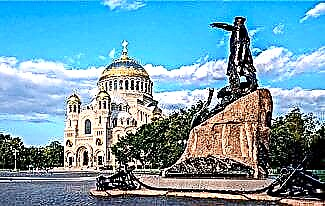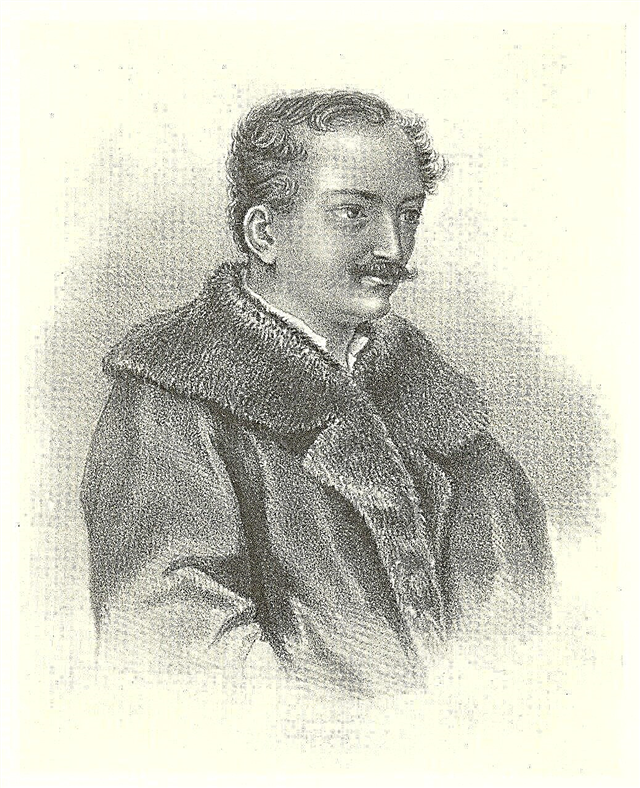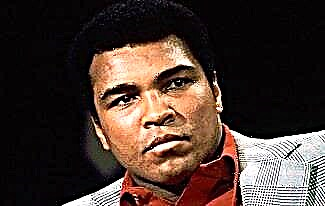Hannibal (247-183 BC) - Carthaginian commander. He was an ardent enemy of the Roman Republic and the last significant leader of Carthage before its fall during the Punic Wars.
There are many interesting facts in the biography of Hannibal, which we will talk about in this article.
So, before you is a short biography of Hannibal.

Hannibal biography
Hannibal was born in 247 BC. in Carthage (now the territory of Tunisia). He grew up and was brought up in the family of the commander Hamilcar Barki. He had 2 brothers and 3 sisters.
Childhood and youth
When Hannibal was about 9 years old, he vowed to remain an enemy of Rome for the rest of his life. The head of the family, who often fought with the Romans, had high hopes for his sons. He dreamed that the boys would bring this empire to ruin.
Soon, his father took 9-year-old Hannibal to Spain, where he tried to rebuild his hometown after the First Punic War. It was then that the father forced his son to take an oath that he would resist the Roman Empire for the rest of his life.
An interesting fact is that the expression "Hannibal's Oath" became winged. During the military campaigns of Hamilcar, his son Hannibal was surrounded by soldiers, in connection with which he was familiar with military life from an early age.
Growing up, Hannibal began to participate in his father's military campaigns, gaining invaluable experience. After the death of Hamilcar, the Carthaginian army in Spain was led by his son-in-law and associate Hasdrubal.
After some time, Hannibal began serving as the commander of the cavalry. He showed himself to be a brave warrior, as a result of which he had authority with his subordinates. In 221 BC. e. Hasdrubal was killed, after which Hannibal was elected the new leader of the Carthaginian army.
Commander-in-Chief in Spain
Having become commander-in-chief, Hannibal continued to wage a stubborn struggle against the Romans. He managed to expand the territory of Carthage through well-planned military operations. Soon the captured cities of the Alcad tribe were forced to recognize the rule of Carthage.
After that, the commander continued to conquer new lands. He occupied the large cities of the Wakkei - Salamantika and Arbokala, and later subdued the Celtic tribe - the Carpetans.
The Roman government was concerned about the successful actions of the Carthaginians, realizing that the empire was in danger. Both sides began to negotiate the rights to possession of certain territories. Negotiations between Rome and Carthage were deadlocked, as each side put forward its own demands, not wanting to compromise.

As a result, in 219 BC. Hannibal, with the permission of the Carthaginian authorities, announced the beginning of hostilities. He began a siege of the city of Sagunta, which heroically resisted the enemy. However, after 8 months of siege, the inhabitants of the city were forced to surrender.
By order of Hannibal, all the men of Sagunta were killed, and the women and children were sold into slavery. Rome demanded from Carthage the immediate extradition of Hannibal, but without receiving a response from the authorities, declared war. At the same time, the commander had already matured a plan to invade Italy.
Hannibal paid great attention to reconnaissance activities, which yielded results. He sent his ambassadors to the Gallic tribes, many of whom agreed to become allies of the Carthaginians.
Italian campaign
Hannibal's army consisted of an appreciable 90,000 infantry, 12,000 horsemen, and 37 elephants. In such a large composition, the army crossed the Pyrenees, encountering resistance from various tribes along the way.
An interesting fact is that Hannibal did not always enter into open confrontations with enemies. In some cases, he made expensive gifts to the leaders, thanks to which they agreed not to interfere with the path of his soldiers through their lands.
And yet, quite often he was forced to wage bloody battles with opponents. As a result, the number of his fighters was constantly decreasing. Having reached the Alps, he had to fight the mountaineers.

Eventually, Hannibal made it to the Moriena Valley. By that time, his army consisted of only 20,000 foot soldiers and 6,000 horsemen. After a 6-day descent from the Alps, the warriors captured the capital of the Taurin tribe.
The appearance of Hannibal in Italy came as a complete surprise to Rome. At the same time, some Gallic tribes joined his army. The Carthaginians met with the Romans on the coast of the Po River, defeating them.
In subsequent battles, Hannibal again proved to be stronger than the Romans, including the battle of Trebia. After that, all the peoples who inhabited this area joined him. A few months later, the Carthaginians fought with the Roman troops who were defending the road to Rome.
During this period of his biography, Hannibal suffered a serious inflammation of the eyes, for which reason he lost one of them. Until the end of his life, he was forced to wear a bandage. After that, the commander won a series of serious victories over the enemy and was only 80 miles from Rome.
By that time, Fabius Maximus had become the new dictator of the empire. He decided not to enter open war with Hannibal, preferring to her the tactics of exhausting the enemy with partisan sorties.
After the end of the dictatorship of Fabius, Gnei Servilius Geminus and Marcus Atilius Regulus began to command the troops, who also followed the strategy of their predecessor. Hannibal's army began to experience severe food shortages.
Soon the Romans gathered an army of 92,000 soldiers, deciding to move on the enemy exhausted by campaigns. In the famous battle of Cannes, Hannibal's soldiers showed heroism, managing to defeat the Romans, who were superior in strength. In that battle, the Romans lost about 50,000 soldiers, while the Carthaginians only about 6,000.
And yet Hannibal was afraid to attack Rome, realizing that the city was very fortified. For the siege, he did not have the appropriate equipment and proper food. He hoped that the Romans would offer him a truce, but this did not happen.
The fall of Capua and the war in Africa
After the victory at Cannes, Hannibal moved to Capua, which supported the actions of Carthage. In 215 BC. the Romans planned to take Capua into the ring, where the enemy was. It is worth noting that during the winter in this city, the Carthaginians indulged in feasts and entertainment, which led to the decomposition of the army.
Nevertheless, Hannibal managed to take control of many cities and make alliances with various tribes and kings. During the conquest of new territories, few Carthaginians remained in Capua, which the Romans took advantage of.

They laid siege to the city and soon entered it. Hannibal was never able to regain control of Capua. In addition, he could not attack Rome, realizing his weakness. After standing for some time near Rome, he retreated. It is curious that the expression "Hannibal at the gates" became winged.
This was a major setback for Hannibal. The massacre of the Romans over the Capuans frightened the inhabitants of other cities, who went over to the side of the Carthaginians. Hannibal's authority among the Italian allies was melting before our eyes. In many regions, unrest began in favor of Rome.
In 210 BC. Hannibal defeated the Romans in the 2nd Battle of Gerdonia, but then the initiative in the war passed to one side or the other. Later, the Romans were able to win several important victories and gain an advantage in the war with the Carthaginians.
After that, Hannibal's army retreated more and more often, surrendering cities to the Romans one after another. Soon he received orders from the elders of Carthage to return to Africa. With the onset of winter, the commander began to prepare a plan for a further war against the Romans.
With the beginning of new confrontations, Hannibal continued to suffer defeats, as a result of which he lost all hope of defeating the Romans. When he was urgently summoned to Carthage, he went there with the hope of concluding peace with the enemy.
The Roman consul Scipio put forward his terms of peace:
- Carthage relinquishes territories outside Africa;
- gives out all warships except 10;
- loses the right to fight without the consent of Rome;
- returns Massinissa his possession.
Carthage had no choice but to agree to such conditions. Both sides concluded a peace agreement, as a result of which the 2nd Punic War was ended.
Political activity and exile
Despite the defeat, Hannibal continued to enjoy the authority of the people. In 196 he was elected a Suffet - the highest official of Carthage. He introduced reforms to target oligarchs who made dishonest profits.
Thus, Hannibal made himself many serious enemies. He foresaw that he might have to flee the city, which ultimately happened. At night, the man sailed by ship to the island of Kerkina, and from there went to Tire.

Hannibal later met the Syrian king Antiochus III, who had an uneasy relationship with Rome. He suggested to the king to send an expeditionary force to Africa, which would induce Carthage to war with the Romans.
However, Hannibal's plans were not destined to come true. In addition, his relationship with Antiochus became increasingly tense. And when the Syrian troops were defeated in 189 at Magnesia, the king was forced to make peace on the terms of the Romans, one of which was the extradition of Hannibal.
Personal life
Almost nothing is known about Hannibal's personal life. During his stay in Spain, he married an Iberian woman named Imilka. The commander left his wife in Spain when he went on an Italian campaign, and never met her again.
Death
Defeated by the Romans, Antiochus pledged to hand Hannibal over to them. He fled to the king of Bithynia Prusius. The Romans did not leave their sworn enemy alone, demanding the extradition of the Carthaginian.
The Bithinian warriors surrounded Hannibal's hideout, trying to grab it. When the man realized the hopelessness of the situation, he took the poison from the ring, which he always carried with him. Hannibal died in 183 at the age of 63.
Hannibal is considered one of the greatest military leaders in history. Some call him the "father of strategy" for his ability to fully assess the situation, conduct intelligence activities, deeply study the battlefield and pay attention to a number of other important features.
Hannibal Photos















